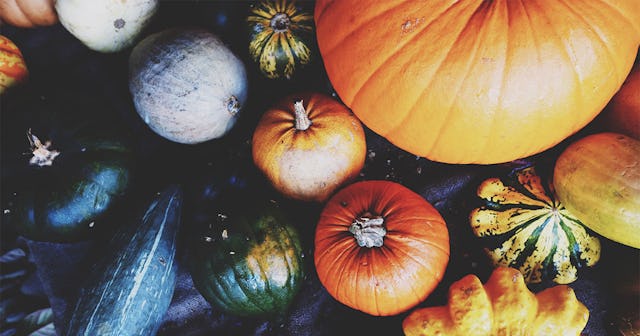Here’s How To Properly Store Fall And Winter Vegetables

If you are anything like me you tell yourself the colder months are coming and you need to up your veggie game since you want to keep from feeling like a slug all winter. This isn’t easy, I know.
In the summertime we have a lot more access to things like our gardens, farmers’ markets, and a bigger selection in the grocery store. And a lot of people know the feeling of harvesting a ton of zucchini or tomatoes and googling recipes to eat these gems until we literally can’t look at another vegetable.
I often find myself throwing out lettuce, carrots, potatoes, and many other vegetables that seem to rot or turn wrinkly overnight in the wintertime. The truth is, I wasn’t storing a lot of the correct way, and I’d curse myself every time something would pass because it’s literally like throwing money away.
I’ve been victim of seeing something like potatoes or roasting vegetables in the market this time of year and I swear I’m going to make soups, stews, and roasted veggies every night and my home is going to smell like the Whole Foods salad bar section.
But alas, that rarely happens because life gets in the way, Also, veggies aren’t like meat or a lot of fruit. If you don’t get to those things, you can throw them in the freezer and save them for later.
So, how can we store veggies in the winter time so they will last a bit longer and we can try and keep our diet somewhat balanced between all the baked goods that are floating around this time of year?
It’s not as hard as you might think and good news: You don’t need a root cellar, which is good because most homes today don’t have one — but also, they are creepy, trust me. I had one growing up and I’d have to go down there to get apples when my mom made applesauce. I once found a snake wrapped around the apples and I have not been the same since.
The Old Farmer’s Almanac says all you need is a cool, dark place that stays lower than 60 degrees Fahrenheit but doesn’t freeze.
Think of a room at the front or back of your house that you don’t heat, a closet that stays cold, or a screened-in porch.
Maybe you have an unheated garage or shed, or a basement that you don’t heat at all or you keep really cool.
We have a finished basement and I turn the heat down to fifty five degrees in the winter time since no one goes down there — that’s a perfect place for me to store my veggies.
If you harvest your root vegetables yourself, or like to buy in bulk, it’s important you don’t wash things like potatoes and beets when you get them home.
The Old Farmer’s Almanac says you need to store things like root vegetables “in damp sand, peat moss, or sawdust so they don’t touch each other. While “celery keeps best if pulled up by the roots and stored upright with the roots in damp sand.
Make sure your materials for storing these veggies aren’t wet; just damp. An easy way to keep it at the perfect consistency is to spray the sand or moss from time to time with a spray bottle.
It’s also important to keep these foods at” 32° to 40°F (0° to 4.5°C).
Things like cabbage, brussels sprouts and potatoes can be stored in the same space as root vegetables but they need a little extra air flow. “Cabbage and brussels sprouts can be uprooted and replanted in a bucket or bag of moist soil,” says the Old Farmer’s Almanac, while potatoes need complete darkness and to be stored around 40 degrees Fahrenheit.
Staples like onions, garlic, and shallots need dry, cool air. These are the perfect things to tie up in your unheated closet, or stored in baskets (only two layers deep, so they can breathe).
If you are going to store things like squash, they need warmer conditions (around fifty to sixty degrees Fahrenheit). “Squash and sweet potatoes do need to be cured before storage. For squash, leave stems intact and cure for two weeks to dry and harden the skin before storing,” according to the Old Farmer’s Almanac.
Always make sure you don’t pile them on top of each other, too. This will help them keep longer.
Things like lettuce will last longer when stored in the refrigerator, unwashed in a sealed bag. But if you just have to wash them, The New York Times reports, “If you prefer pre-washing so your greens are ready to use, we’ve had success wrapping them in a clean towel, paper towel, or butcher paper to absorb the excess moisture. Just keep in mind that this may over-dry the greens and cause some wilting, so they won’t keep quiet as long. To get the longest life out of your leafy greens, remove and discard any brown or slimy leaves and then store the rest in a zip-top bag or other airtight container.”
With just a little prep work — it actually makes for a fun fall project — you can have your vegetables last longer through the winter so you can actually make that potato or cabbage soup during the next time you are snowed in, and don’t have to brave the colder temperatures to make such frequent trips to the store.
It really is worth the extra effort and more rewarding than throwing away your hard earned money.
This article was originally published on